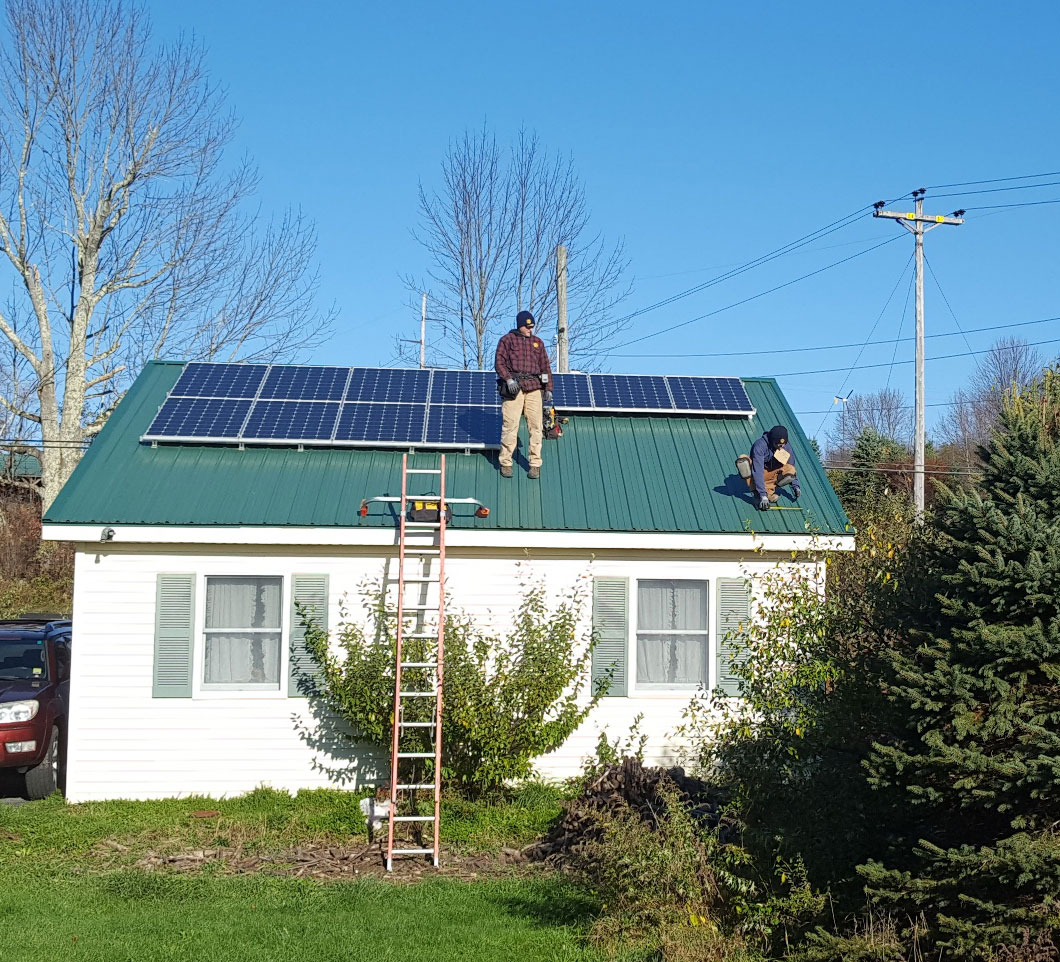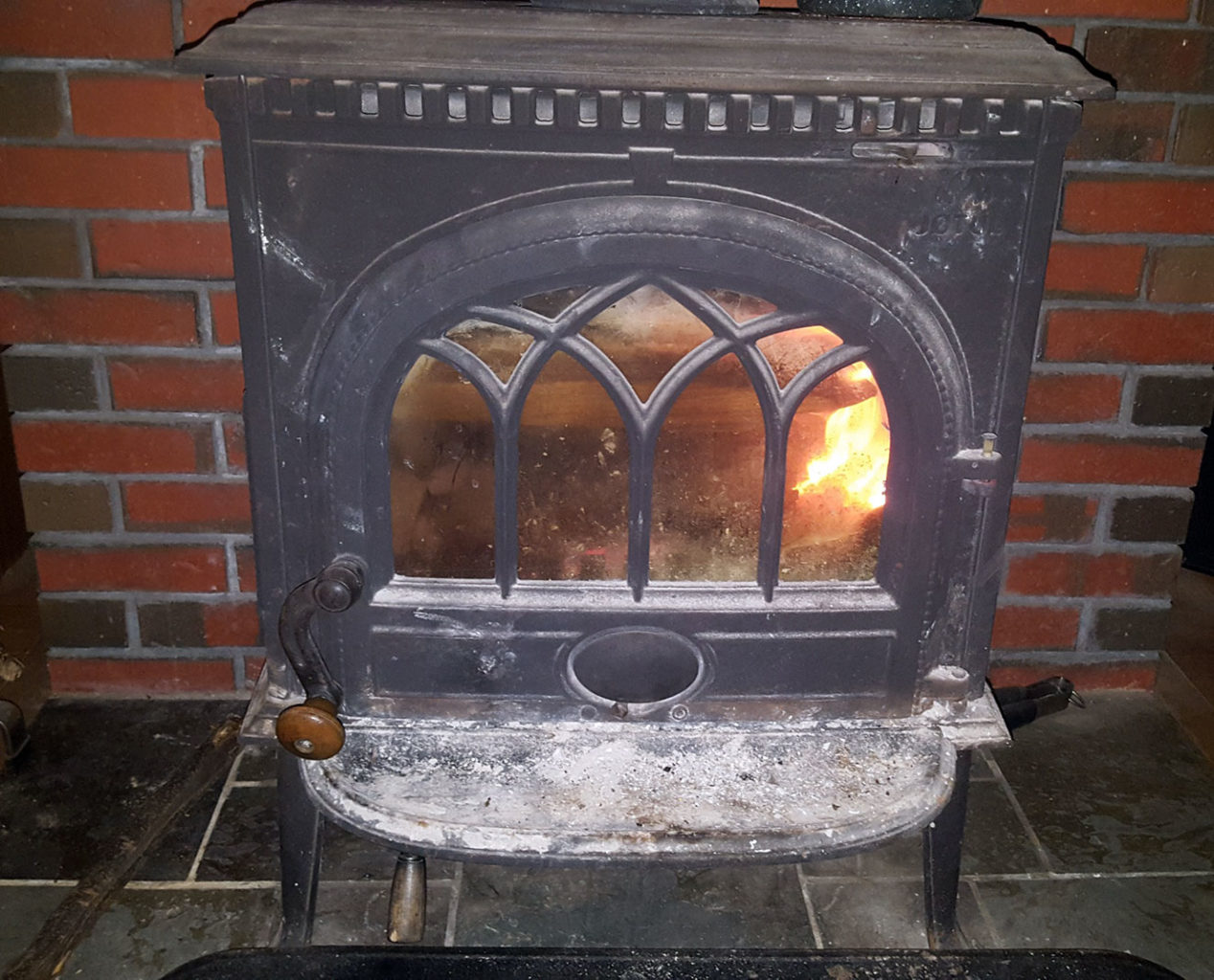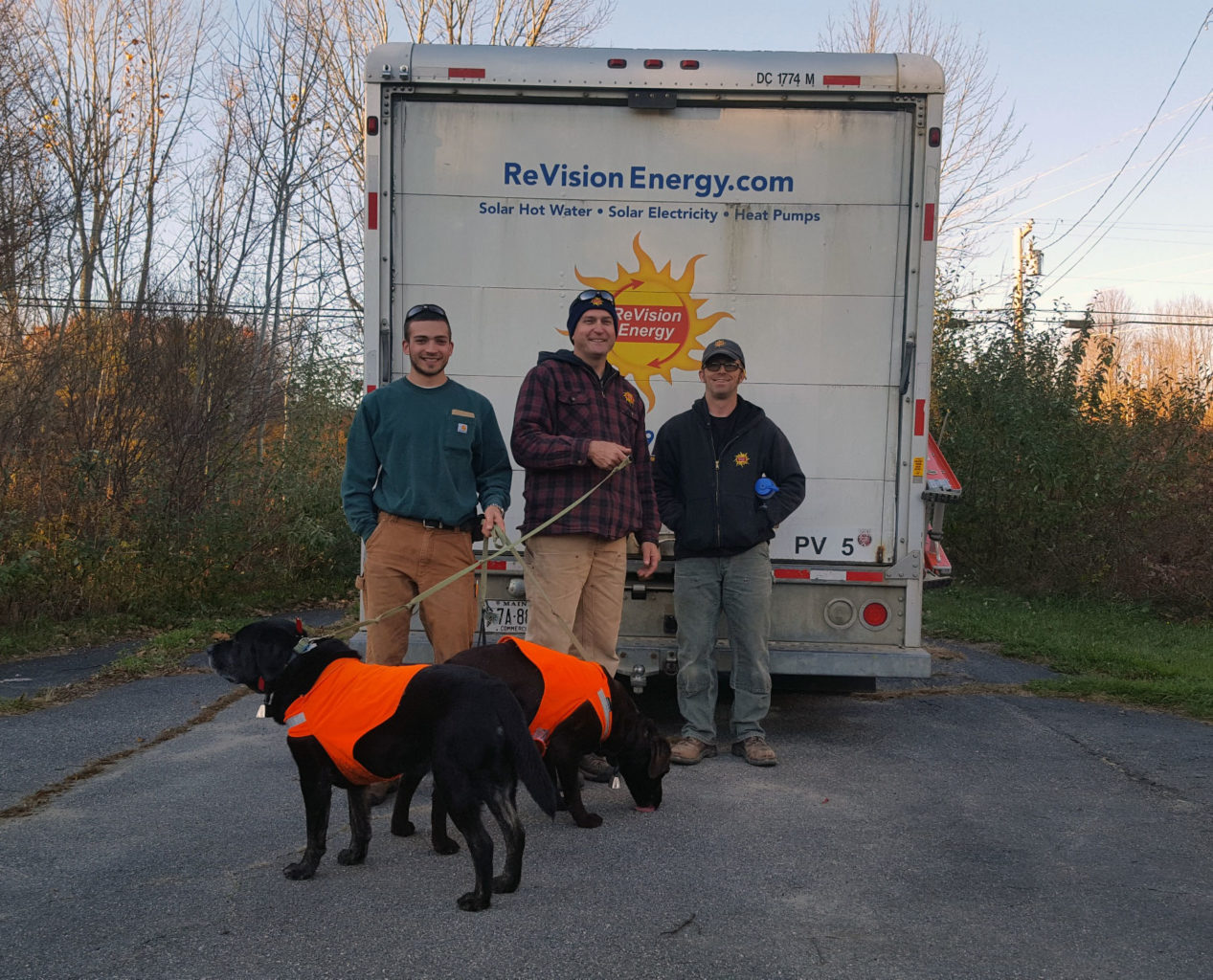The year 2017 was one of energy upgrades for me. In the summer, Augusta Fuel Company (AFC) pulled out my crumbling oil boiler and all of its associated piping. This was a relief. The piping didn’t meet modern code, and having spent a lot of time working on issues related to in-home oil spills, I really didn’t want to experience one. Because I previously converted to electric water heat (I use a conventional electric heater rather than a heat pump because I don’t use much hot water), I’m now pretty much off direct fossil fuel use in my house. I don’t plan to give up my propane cook stove, though. I really do prefer it to an electric stove!
AFC also put in two ductless heat pumps for me: one in the basement and one in my living room (my house is open concept, so this heat pump heats the whole upstairs). AFC did all of this work for me in just two days!

One of the two heat pumps I had installed.
Efficiency Maine says that ductless heat pumps are the cheapest (per unit energy) and most energy efficient way to heat and cool. The upstairs heat pump was a joy from day one. My house has large, sliding glass doors facing directly south and no trees that provide shade. In the summer, it gets miserably hot on sunny days. The heat pump cools my upstairs very quickly in the evening and keeps it comfortable overnight. It even kept the house cool on hot days when I was home and the sun was shining brightly. I used to suffer being at home on days like that because my house can easily reach 90 degrees on the main floor. Even though I own a window air conditioner, I only put it up for one summer when I had a very sick dog to take care of. Conventional air conditioners are noisy, and the room temperature oscillates a lot. I hate them. The heat pump is quiet and keeps the upstairs at a more constant temperature. Even with my existing setup of only 11 solar panels, I used much less electricity over the summer than I generated.
So far so good with the heat pumps in the cold weather, too. I still heat my upstairs with a wood stove, which gets the temperature up to 65-70 degrees so the heat pump isn’t doing much warming then. I keep it set at 61 degrees, its lowest setting. I used to set my thermostat at 45 degrees when I had oil heat, so it’s much more comfortable waking up in the morning. I don’t have to make a fire before heading out with the dogs for our morning walk unless I want to!
Still, this is a little bit of an experiment for me. My sole source of heat in the basement is now the heat pump downstairs. Will it keep the pipes from freezing when the temperature drops well below zero? I think so, and so did AFC or I would not have put the heat pump in the basement, but I’ll be watching! I will work that heat pump harder than most people, even though I set it at its lowest setting, because I have an indoor/outdoor kennel my dogs use when I’m at work. They go back and forth through a dog door with a flap over it that is not a great seal (I have a night cover that seals better for when the dogs are not in the kennel).
The next step of my 2017 energy upgrades was 10 more solar panels that ReVision Energy put on my garage roof in November. My roof is now full—with a total of 21 panels! The newer 10 panels cost less than my 2015 panels, and they pack more punch. The older panels are 255 watts each, and the newer ones are 300 watts. That means I get more energy with fewer panels for less money! All good things. And the installation was quick and easy. ReVision did the whole thing in just one day!

Getting started.
Now, I generate as much solar electricity on a sunny day in December as I did on a sunny day in June with just my old panels. My system is hooked up to the internet now, so I can check how much electricity I am generating from the sun way too often from my phone. It’s a whole new way to fidget!

Solar roof!
What exactly will be the net impact of all of these changes? They have certainly made my home more comfortable. It’s warmer in winter and cooler on hot summer days, the days I like least. I’m relatively certain that my panels will generate more than enough credits in sunny months to balance out increased electricity use in cold months. I won’t know that for sure, though, until next year. Nevertheless, I think I will save money because I won’t be using the 200 gallons of heating oil I used to use each year. Reduced oil use provides the main benefit to the environment from my upgrades, although I will also burn less firewood, which will reduce air pollution and carbon emissions, too. Maybe burning less wood will even help the tendinitis in my elbows, which cutting my own firewood by hand (I fear chainsaws) definitely aggravates.

My other heat source: wood stove
My upgrades would result in even more benefit to the environment if more clean energy powered Maine’s electricity grid, because at night, I run my heat pumps on power from the grid. Even better would be batteries with which I could store sun power I make in the day to use at night, but those don’t feel affordable to me right now. I’m doing what I can with the financial resources that I have. I also wish I was brave enough to get up on my garage roof to wipe the snow off my panels, but I’m not. Revision Energy strongly advises people not to do this, by the way. Nobody is better off with broken bones, and over the course of a year, I don’t lose much solar generation to snow.
But, I also realize that my changes are tiny, and we really need better policies to encourage more people to upgrade their homes and to build energy efficiency and distributed generation into all new construction. Even though many people across the country are making their homes more energy efficient and generating electricity themselves, we are in a serious time crunch. We have pumped so much carbon into the atmosphere that we just don’t have time to wait for people to slowly adopt new means of powering their lives. We need massive change soon. We need our decision makers to act to make that massive change now.

Arthur, Justin, and Ryan from ReVision Energy pose with my dogs, Percy and Thor, after finishing the solar installation.










Leave a Reply